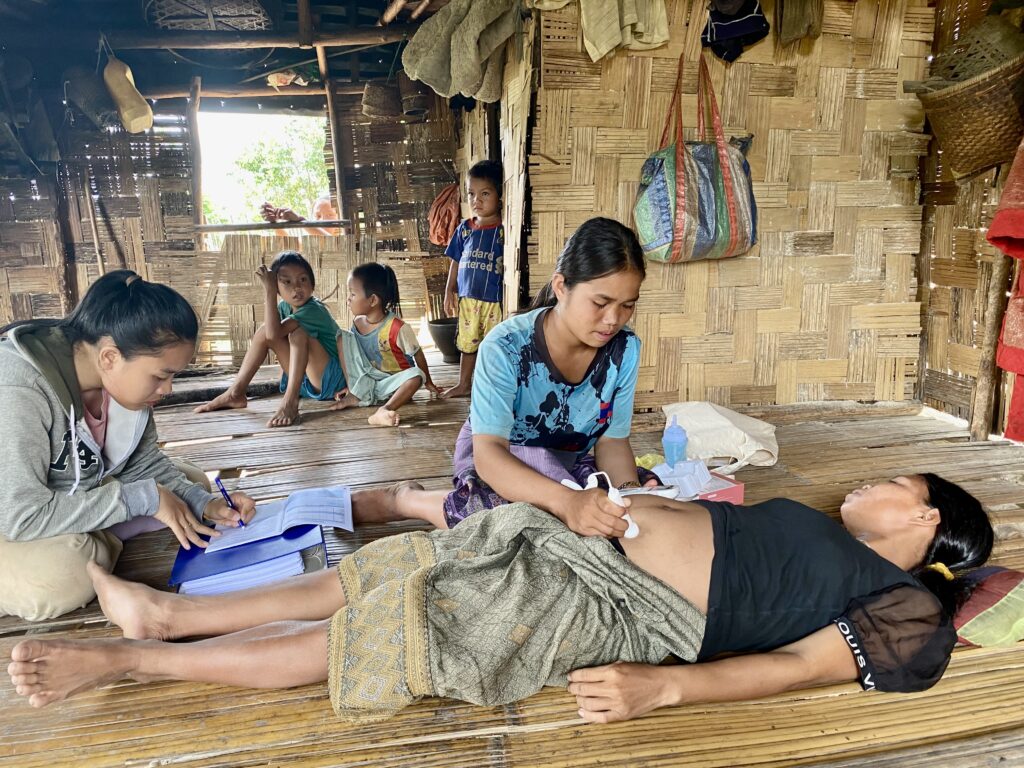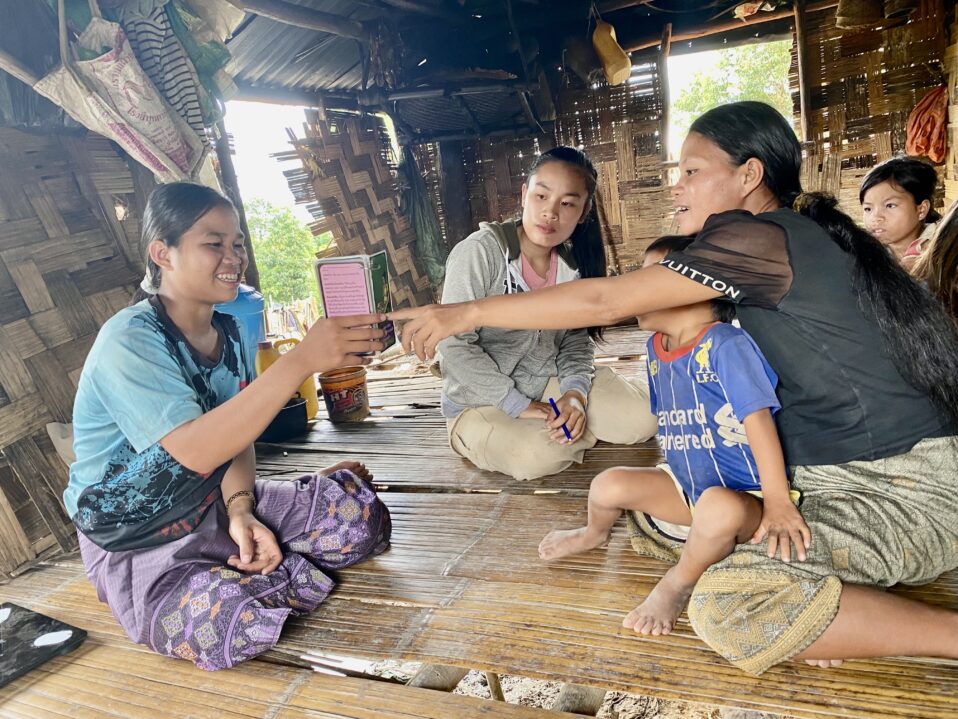Story and photos by Ms.Huyen Hoang, MCNV Board of Director, captured from a field mission in Sepone district, Lao PDR in early September 2023.

Ms. Chung is a 32-year-old woman living in Stuak Nai village, Sepone district, Laos PDR. She has 5 children (4 girls and one boy) and is at her 5th month pregnancy with her 6th baby.
I came to visit her on 4th September 2023 while she was being checked up by one village health worker.
After briefing Ms.Chung about the visit, the village health worker proceeded with weighing the mother and recording the information.
She later asked Ms.Chung to lay down for the fetal position check and fundal (belly) height measurement using her hands. A small doppler was used to detect the baby’s heart rate.
Ms. Chung later shared with me that she was very happy to hear her child’s heartbeat.
After the check-up, the village health worker showed Ms.Chung a set of picture cards to discuss on maternal health. The cards are made double sides, one side featuring picture that the mother can see and know what it is. The other side was a key message of a topic that the village health worker wants to deliver.
The set of cards that were being used to communicate with Ms. Chung is for women at 4-6 months pregnancy. They contained the information on what the women should do and should avoid, also including what support the husband and other family members can provide to her.
Looking at a card with a picture of a husband carrying heavy stuff for the wife when she is pregnant, Ms. Chung laughed while shaking her head to signal the opposite. What she meant was: women in the area often do this kind of work (carrying heavy things) and there is no different even if they are pregnant.
The picture cards made the discussion become more cheerful and interactive.

In the conversation, I asked Ms. Chung about what she did with her previous pregnancies. She said that for each pregnancy, she would go for one time check-up at the health centre (about 14 km away) when she was about 6–7-month pregnant. In her case, her husband accompanied her to the health centre. All of her 5 children were delivered at home and with the support from her husband, who held her from the back. All other things, including cutting of the umbilical cord was done by the woman herself. With this 6th pregnancy, the village health worker came to her house to do the check-up. This village-based service is available thanks to the project ‘Together in action for mother and child health‘ funded by AFAS Foundation and implemented by MCNV in coordination with Sepon district health authority./.




